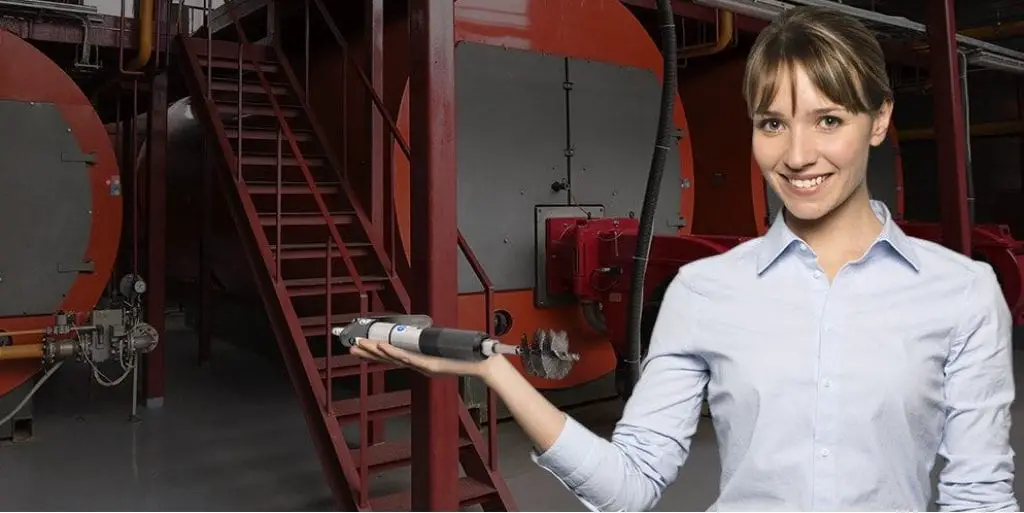In engineering there are a number of designs that utilize tubes to facilitate their different operations. These tubes are usually required to maintain a certain state for optimal functioning. This could be a certain level of surface roughness, ability to transfer heat easily or even being clean enough to transfer materials without contamination.

As these tubes are put to use, they become fouled during the course of their operation. Fouling refers to any form of contamination, residue deposits or accumulation that negatively affects the operations of the tubes. You can read more about it here.
When this occurs, the tube needs to be cleaned to restore it to full operational capacity. A tube cleaning system is therefore any cleaning procedure that is used to achieve this optimal operational capacity.
Types of Tube Cleaning Systems
There are different types of cleaning methods that the different available systems adopt. These are broadly grouped under three types: Chemical, mechanical and thermal.
Chemical
In a chemical tube cleaning process, chemicals are used for the cleaning of the contaminants or residue buildup. What chemicals will be used and how they will be used will depend on the type of system in which the tube is being used and the material of the tube.
There are two major disadvantages to this method. First, the process requires that the system be shut down before the cleaning process can commence.
The second disadvantage is that if the tube to be cleaned is quite huge, you may require a tremendous amount of cleaning liquid which may then constitute a waste disposal challenge.
There could also be the risk of contamination if the system to be cleaned operates in the food or pharmaceutical industry.
Mechanical
In this type of method, a cleaning body is moved through the tube, cleaning out the accumulation. This could be a brush attached to a flexible spring or a rod which is then used to move it through the tube.
Thermal
In this method, the tube to be cleaned is heated until the deposits become encrusted and flaky and can then be removed by flushing the tube with a suitable cleaning liquid or simply allowing the system run off the dislodged crusts.
Tube cleaning can either be done on-line or off-line. The method adopted will to a large extent determine which of the two options it will be. In the on-line process, the tubes can be cleaned as they are and with them functioning in the main system while in the off-line process, the tubes have to be taken out of the system to be cleaned.
How to Choose a Tube Cleaning System
When choosing a tube cleaning system, it is important to make sure that whichever system you choose meets certain specifications to ensure best performance. To be certain you are making the right choice, there are a number of factors to consider. Let us look at a few of these:
Ease of Use
The first thing to look at is how easy the system is to use. You most certainly do not want anything that is too complicated to use. There are easy to use tube cleaning systems that make use of efficient, air-driven hose or rod with the cleaning brush attached to the head. This is of course a mechanical type.
The air-driven hose pushes the cleaning head through the tube and also retracts it when it has cleaned through the tube. This is the type usually referred to as an automatic tube cleaning system.
Simply insert it and it will do its thing without any help from you. More so, they do not come with any gauges that you will need to monitor carefully. It’s so simple that practically anyone can use it – a child can actually use it.
One more consideration under ease of use is how easily you can move the equipment. You need something that is compact enough to be carried around with ease. This will further increase its ease of use.
Efficiency
This should of course be at the top of the list of factors to be considered. The efficiency of any system should include both the cleaning process as well as the evacuation process. It is important that the tube is thoroughly rid of every residue so that it can be restored to full functionality. This will be determined by how well the cleaning process is designed to run.
Some designs like the ones from https://putzmaus-america.com/ carefully but efficiently removes every bit of residue and then it moves everything to the very end of the tube. With the residue deposited in this location, it is a lot easier to suck them out with a vacuum cleaner.
If the residue is cleaned out and then not properly removed from the tube, fouling will occur again within a short time, making the tube cleaning process far from a success.
Safety of the Tube
The fact that the tube needs to be thoroughly cleaned does not mean it should be scrapped and scratched all over. The cleaning system should be able to clean the tube thoroughly without damaging it.
You usually find most efficient systems using soft iron brushes that will remove the residue without scratching or scaring the tube in the process.
Versatility
There are times when the tubes to be cleaned are pretty hot. If you have to wait for the tubes to totally cool down, you will be wasting precious time that the system should have been running. Look for a system that can clean the tube even at high temperatures.
Some of these cleaning systems can withstand heat of up to 400 degrees Celsius. This makes the need for pre-cooling totally unnecessary, saving you some good time.
Cost
An efficient tool of system does not have to cost an arm and leg. Carefully consider the cost of the tool you are going for and be sure you cannot get a more efficient and compact one for less before committing to the purchase.








